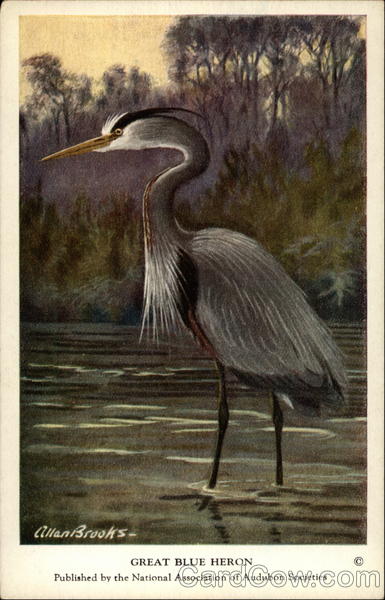Front:
allanBrooks-
GREAT BLUE HERON
Published by the National Association of Audubon Societies
Back:
No. 3 Great Blue Heron
Length 48 inches
This stately bird is often mistakenly called
“Blue Crane” by those who are not students of
birds. It is often seen standing motionless in the
shoal waters of lake margins or rivers, or on mud-
flats left by receding tides. Here it catches the
fish and frogs, as well as other prey which consti-
tute its food. Again, with neck drawn itagediegs
stretched out behind, it may be seen Happing with
to
During most of the year it is a solitary bird,
but during the byeeding setson it often congre-
pairs gathering for this purpose in a favorite lo-
cality. Its best, which coloists of a rude platform
of sticks and twigf is sually placed in tall trees,
although where these do not occur it occasionally
nests on the ground. Generally four or five pale-
blue eggs are laid.
gutture Arround to
gates in coloniese sometimes as many as a hundred
Classification: Order Herodiones. Family Ardeida.
Scientific name: Ardea herodias.
Range: Throughout the Western Hemisphere from
Canada to Panama and Venezuela.
No. 3 from set of 50 Winter Birds of the Northeastern United
States. Published by the National Association of Audubon So-
cieties, 1974 Broadway, New York City. Price per set, in a box,
$1.00 post paid.



